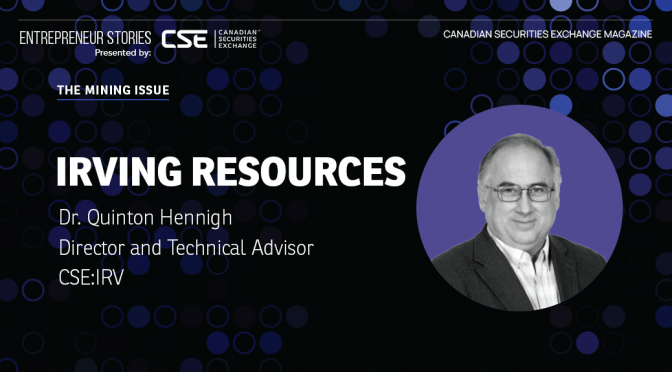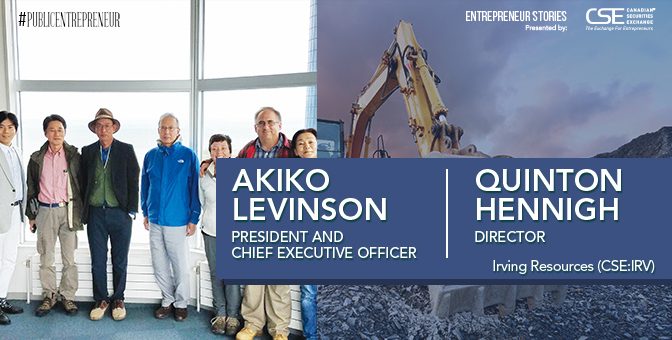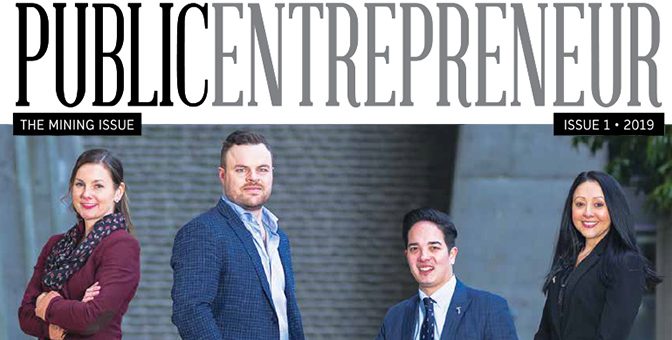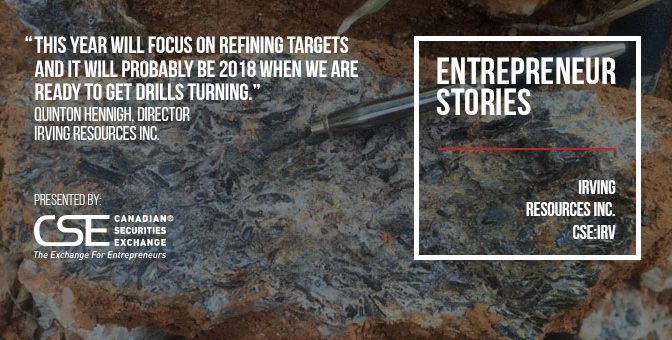A softer Japanese economy, technological advancements, more favourable government policies and a shift in the local attitude toward mining mean it has never been a better time to explore and develop in Japan, according to Vancouver-based junior gold explorer Irving Resources (CSE:IRV).
Formed as a spin-out in a 2015 plan of arrangement between Gold Canyon Resources and First Mining Finance, Irving’s Co-Founders, Akiko Levinson and Dr. Quinton Hennigh, created the company with a focus on exploration in Japan.
Levinson, who is also Irving’s President and Chief Executive Officer, has more than 25 years of experience in the junior mining industry, previously serving as President of Gold Canyon Resources.
Hennigh, an economic geologist with more than 25 years of exploration experience with major gold mining firms, is Irving’s Technical Advisor.
They have attracted notable shareholders to Irving, including Newmont, the company’s largest investor, holding a stake of just under 20%, and Sumitomo Corporation, which holds about 5%.
Through subsidiary Irving Resources Japan GK, Irving has been operating in Japan for six years with a growing portfolio of 100% owned projects located across the islands.
According to Levinson, who is Japanese, the company is not seen as foreign.
“Most of our team members are Japanese or foreigners who reside in Japan,” Levinson says, adding that having an understanding of the Japanese language and culture gives Irving an advantage while operating in the country.
Irving’s focus is on high-silica, high-grade epithermal gold and silver veins, with such ore suitable for smelter flux in one of the many existing base metal smelters in Japan. Precious metals such as gold and silver are recovered during the smelting and refining process.
Hennigh told Canadian Securities Exchange Magazine that this is a simple, cost-effective and environmentally friendly way to produce gold and silver, as it does not require significant capital investment and generates very little surface waste.
“You simply identify deposits that have a high silica content along with appreciable gold and silver that are suited for smelter flux,” says Hennigh. “It’s an absolutely elegant model for developing gold mines.”
Irving’s flagship project, Omu, is located in an epithermal vein district on Japan’s northern island of Hokkaido. Exploration to date has focused on three targets: Omui, Hokuryu and Omu Sinter.
“We have completed drilling on all of those targets, in some cases multiple drill programs, and we think we have substantial discoveries of high-grade gold and silver veins,” Hennigh notes. “We’re seeing potentially economic deposits at all three targets.”
Another main project is Yamagano, which encompasses the past-producing Yamagano Gold Mine, where mining dates back about 400 years. The site has never been explored using modern methods.
Acquired in September 2020, Yamagano is located 11 kilometres southwest of Sumitomo Metal Mining’s Hishikari Gold Mine, which Hennigh points out has produced about 8 million ounces of gold and is one of the highest grade gold mines in the world. “We think Yamagano is a very close analog that could have similar potential,” he explains.
Hennigh also highlighted a group of tenements that the company has recently applied for on the Noto Peninsula. Totalling 337 square kilometres with four target areas, the tenements have displayed strong stream sediment gold, silver, arsenic, antimony, mercury and gold anomalism.
“We have identified several areas where there are very clear gold anomalies that have no historical record,” he says. “In other words, there could be substantial epithermal vein occurrences that are yet to be recognized.”
Influencing Hennigh’s and Levinson’s decision to focus their exploration efforts on Japan was a perfect alignment of factors.
A softening Japanese economy has made exploration and mining cheaper in the country, just as the sensitivity around mining has diminished with past problem projects now cleaned up and remediated. Meanwhile, revamped mining laws have made it more feasible for exploration in Japan.
“With Japan’s demographic shift, its aging population, many of these small towns in rural areas would fade away, so they welcome that we bring economic life to their town,” Hennigh says.
On the geology side, Hennigh highlights advancements in the understanding of epithermal gold systems in recent years as another factor. “That bodes well for discovering new blind deposits that were not well recognized previously.”
For Irving, working in Japan is all about building relationships and trust. The company has made an effort to build relationships with every stakeholder it works with, from local farmers to major players in the mining sector.
“Akiko has gotten to know and sat down and had tea with many of the farmers in the area,” Hennigh explains. “She knows the mayor of the area where our flagship Omu project is quite well. We see these as important relationships to build to make everyone comfortable about the changes and opportunities within mining.”
At a higher level, the company has built strong relationships with Japan’s old mining houses and with government agencies such as the Japan Organization for Metals and Energy Security (JOGMEC), an organization administered by the Ministry of Economy, Trade and Industry of Japan responsible for the stable supply of various resources.
“These groups that we’ve connected with are part of the overall system that is going to be required to make new mines happen in Japan,” Hennigh says.
In 2023, Irving plans to accelerate exploration across its portfolio by adding a third drill rig after being handcuffed by pandemic-related travel and other restrictions for the past three years.
It is building up its roster of staff to operate the drills, including expats from foreign countries and Japanese drillers.
According to Hennigh, Irving expects to drill three promising targets at its flagship Omu project and commence testing of a new target at the project, Maruyama, which has returned silica-rich surface samples with good values of gold and silver.
At its Yamagano project, Irving has been carrying out geophysical work in preparation for a drill program to commence in the latter half of 2023.
Hennigh says the addition of a third drill rig is a major milestone for the company because it will allow Irving to carry out two concurrent drill programs: one in Hokkaido at its Omu project and one in Kyushu at its Yamagano project.
“By the end of 2023, I expect to operate three drills on a routine basis in Japan once we’ve got all our people in place,” Hennigh concludes. “This is a big step that dramatically accelerates our drilling and our ability to test targets.”
This story was featured in Canadian Securities Exchange Magazine.
Learn more about Irving Resources at irvresources.com.




